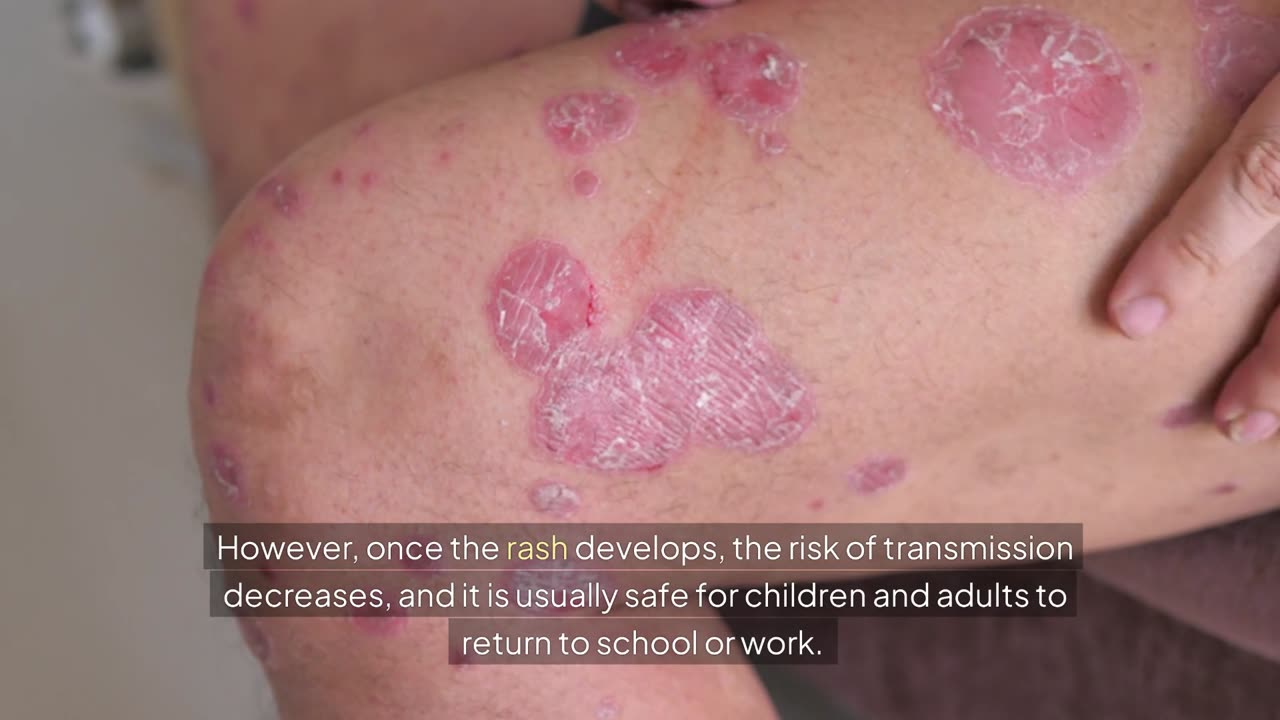Premium Only Content

The ‘Slapped Cheek’ Virus is Back: What You Need to Know About Human Parvovirus B19*
**Introduction:**
As the world slowly returns to pre-pandemic norms, a familiar but often overlooked virus is making a comeback in the United States. The Centers for Disease Control and Prevention (CDC) has issued a warning about the rise of Parvovirus B19, commonly known as "fifth disease" or "slapped cheek" disease. This highly contagious respiratory infection, which primarily affects young children, had seen a decline in cases during the COVID-19 pandemic. However, with the easing of pandemic precautions, Parvovirus B19 is re-emerging, and experts are urging the public to be aware of its symptoms, risks, and preventive measures.
**The Resurgence of Parvovirus B19: A Post-Pandemic Rebound**
### Pandemic Precautions and the Return of Fifth Disease
The COVID-19 pandemic brought about a dramatic shift in how we interact with one another, leading to a significant reduction in the spread of many respiratory viruses, including Parvovirus B19. Social distancing, mask-wearing, and enhanced hygiene practices inadvertently curbed the transmission of this virus. However, as these precautions have relaxed, a resurgence of Parvovirus B19 cases is being observed, particularly among young children who may not have been previously exposed to the virus. This lack of exposure during the pandemic has left a gap in population-level immunity, making it easier for the virus to spread now.
### What is Parvovirus B19? Understanding the ‘Slapped Cheek’ Virus
Parvovirus B19 is a seasonal virus that typically spreads during the late winter, spring, and early summer months. It is most commonly known for causing a mild illness in children, characterized by a distinctive red rash on the face, often referred to as a "slapped cheek" rash. The virus is spread through airborne respiratory droplets, making it highly contagious. While most cases are mild and resolve on their own, Parvovirus B19 can pose serious risks to certain individuals, including those with weakened immune systems, blood disorders, and pregnant women.
### Symptoms and Stages: From Flu-Like Illness to Rash
The symptoms of Parvovirus B19 often begin with a mild, flu-like illness that includes fatigue, headache, muscle aches, and fever. In many cases, these initial symptoms are followed by a second stage, where the characteristic "slapped cheek" rash appears. This rash is often accompanied by joint pain, swelling, and a generalized body rash. While the virus is most contagious in the early stages before the rash appears, it is important to note that once the rash develops, the risk of spreading the virus significantly decreases. In most cases, individuals recover fully within a few weeks, but those with underlying health conditions may experience more severe complications.
### The Risks: Complications and Vulnerable Populations
For the majority of people, Parvovirus B19 causes only mild symptoms. However, certain populations are at a higher risk of serious complications. Individuals with blood disorders, such as sickle cell disease, may experience a dangerous drop in red blood cells, leading to severe anemia. Pregnant women are also at risk, as the virus can cross the placenta and infect the fetus, potentially leading to miscarriage or other adverse outcomes. The CDC estimates that there is a 5-10% risk of fetal complications if a pregnant woman contracts the virus, with the highest risk occurring during the early stages of pregnancy.
### Prevention and Protection: What You Can Do
Unfortunately, there is currently no vaccine available to prevent Parvovirus B19 infection. However, there are several steps individuals can take to reduce their risk of contracting and spreading the virus. The CDC recommends practicing good respiratory hygiene, such as covering your mouth and nose when coughing or sneezing, frequent handwashing, and cleaning commonly-touched surfaces. For those who are particularly vulnerable, such as pregnant women or individuals with weakened immune systems, it may be advisable to avoid close contact with individuals who are exhibiting symptoms of the virus. In cases where someone is infected, it is generally safe to return to work or school once the rash has appeared, as the risk of contagion is lower at that stage.
**The Unseen Impact: Gaps in Surveillance and the Unknowns**
### The Challenge of Monitoring Parvovirus B19
One of the challenges in understanding the true scope of Parvovirus B19 infections in the U.S. is the lack of routine surveillance. Parvovirus B19 is not a notifiable condition, meaning that healthcare providers are not required to report cases to public health authorities. As a result, the CDC relies on indirect methods to track the virus, such as analyzing clinical blood specimens and monitoring reports of related complications in vulnerable populations. This lack of comprehensive data makes it difficult to fully grasp the extent of the current outbreak and underscores the need for increased awareness and research into this common but often overlooked virus.
### Immunity and the Population: Who is Protected?
While Parvovirus B19 is highly contagious, it is important to note that infection typically confers immunity, meaning that individuals who have contracted the virus in the past are unlikely to become infected again. According to the CDC, approximately 50% of adults in the U.S. have detectable antibodies to Parvovirus B19 by age 20, and more than 70% have antibodies by age 40. However, the reduction in cases during the COVID-19 pandemic has left many younger children without this immunity, making them more susceptible to infection now that the virus is on the rise again.
**Conclusion: Staying Vigilant in a Post-Pandemic World**
As Parvovirus B19 makes its resurgence, it serves as a reminder of the importance of vigilance and awareness when it comes to infectious diseases. While the risk to the general public remains low, understanding the symptoms, risks, and preventive measures associated with this virus is crucial, especially for those who are more vulnerable to severe complications. By practicing good respiratory hygiene and staying informed about the latest public health guidance, we can help protect ourselves and our communities from the spread of Parvovirus B19.
---
Thank you for reading! If you found this information helpful, please share it with others who may benefit. Don’t forget to like, subscribe, and comment on our channel to stay updated on the latest health news and insights. Together, we can navigate these health challenges and stay informed.
-
 LIVE
LIVE
Major League Fishing
3 days agoLIVE Tackle Warehouse Invitationals, Stop 1, Day 3
224 watching -
 23:34
23:34
marcushouse
8 hours ago $9.74 earnedBREAKING: Starship Launch IMMINENT – But What’s This SURPRISE Flight 9 Plan?! 🚀🔥
56.8K8 -
 8:43
8:43
Film Threat
1 day agoTHE MONKEY | Film Threat Reviews
64.5K2 -
 15:55
15:55
TSPLY
1 day agoThe Media Is Very Afraid Of FBI Director Kash Patel
47.2K39 -
 6:57
6:57
Cooking with Gruel
21 hours agoMake Cheese Great Again
37.5K12 -
 5:17
5:17
Mrgunsngear
1 day ago $7.62 earnedPresident Trump Has Appointed A New ATF Director
42.8K34 -
 48:17
48:17
Athlete & Artist Show
8 days ago $3.18 earnedS5E1: Chucky Announces First Kid, 4 Nations Face Off, and more!
54.2K2 -
 38:30
38:30
hickok45
10 hours agoSunday Shoot-a-Round # 269
72.1K18 -
 1:39:55
1:39:55
Squaring The Circle, A Randall Carlson Podcast
1 day ago#040 Humanity's Expansion Into The Cosmos: A New Age - Squaring The Circle
41.8K6 -
 12:54
12:54
ariellescarcella
19 hours agoYou're NOT Queer, Just Annoying And Boring
29.3K20